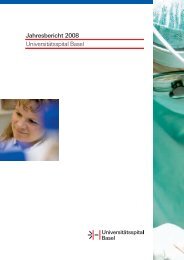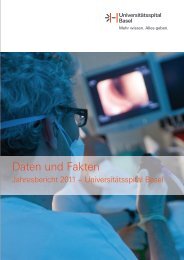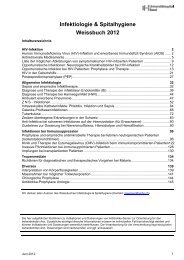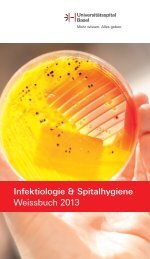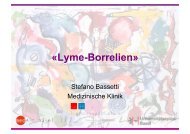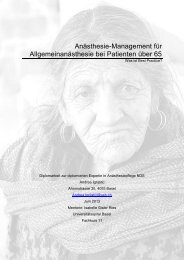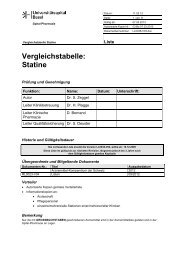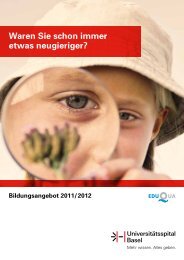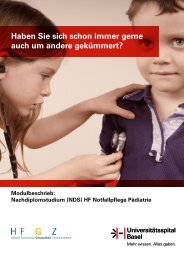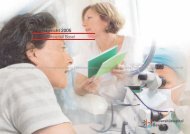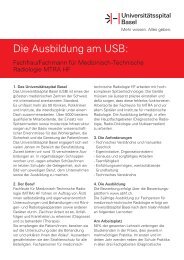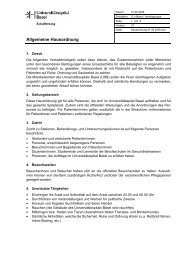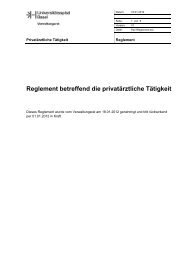Transmucosal Nasal Drug Delivery: Systemic Bioavailability of ...
Transmucosal Nasal Drug Delivery: Systemic Bioavailability of ...
Transmucosal Nasal Drug Delivery: Systemic Bioavailability of ...
Create successful ePaper yourself
Turn your PDF publications into a flip-book with our unique Google optimized e-Paper software.
7. Project III: <strong>Transmucosal</strong> nasal delivery <strong>of</strong> low-dose midazolam – evaluation <strong>of</strong> two preparations for procedural anxiolysis<br />
From 105 patients, who completed the MRI examination 94% (n=99; MD n=50, UD n=49) would<br />
agree to repeat the MRI examination with analog anxiolytic medication, they received as study<br />
medication. From patients, who would refuse to repeat the MRI examinations with the same<br />
anxiolytic medication, 2 were treated with 2 mg midazolam.<br />
Assessment <strong>of</strong> radiologic technician<br />
All completed MRI examinations (n=105, MD n=53, and UD n=52) were rated as normally<br />
accomplishable. In general, patients were judged as calm and cooperative during MRI proceedings<br />
(MD n=44 [85%] and UD n=47 [92%]), 8 patients were very anxious (MD 5 [9%], UD 3 [6%]) and no<br />
patient has fallen asleep during MRI examination.<br />
Image quality<br />
All completed MRI examinations (n=105, MD n=53, and UD n=52) generated image sets <strong>of</strong><br />
excellent quality (MD n=36 [68%] and UD n=44 [85%]) or good quality (MD n=17 [32%]) and UD<br />
n=8 [15%]). No MRI image was <strong>of</strong> satisfying, poor, or very poor quality. All generated image sets<br />
were suitable for diagnosis. The difference <strong>of</strong> image rating between MD and UD group was not<br />
significant, see Figure 7-5.<br />
100<br />
90<br />
85%<br />
Rating <strong>of</strong> image quality [%]<br />
80<br />
70<br />
60<br />
50<br />
40<br />
30<br />
20<br />
68%<br />
32%<br />
15%<br />
10<br />
0<br />
0% 0% 0% 0% 0% 0%<br />
e xce lle nt good satisfying poor ve ry poor<br />
M D 68 32 0 0 0<br />
UD 85 15 0 0 0<br />
Figure 7-5: Assessment <strong>of</strong> image quality (n=105, MD n=53, UD n=52). All MRI images were <strong>of</strong> excellent<br />
(MD n=36 [68%]) and UD n=44 [85%]) or good quality (MD n=17 [32%]) and UD n=8 [15%]). MRI image<br />
quality <strong>of</strong> all image sets (n=105) was suitable for diagnostics.<br />
Katja Suter-Zimmermann Page 90 <strong>of</strong> 188 University <strong>of</strong> Basel, 2008




